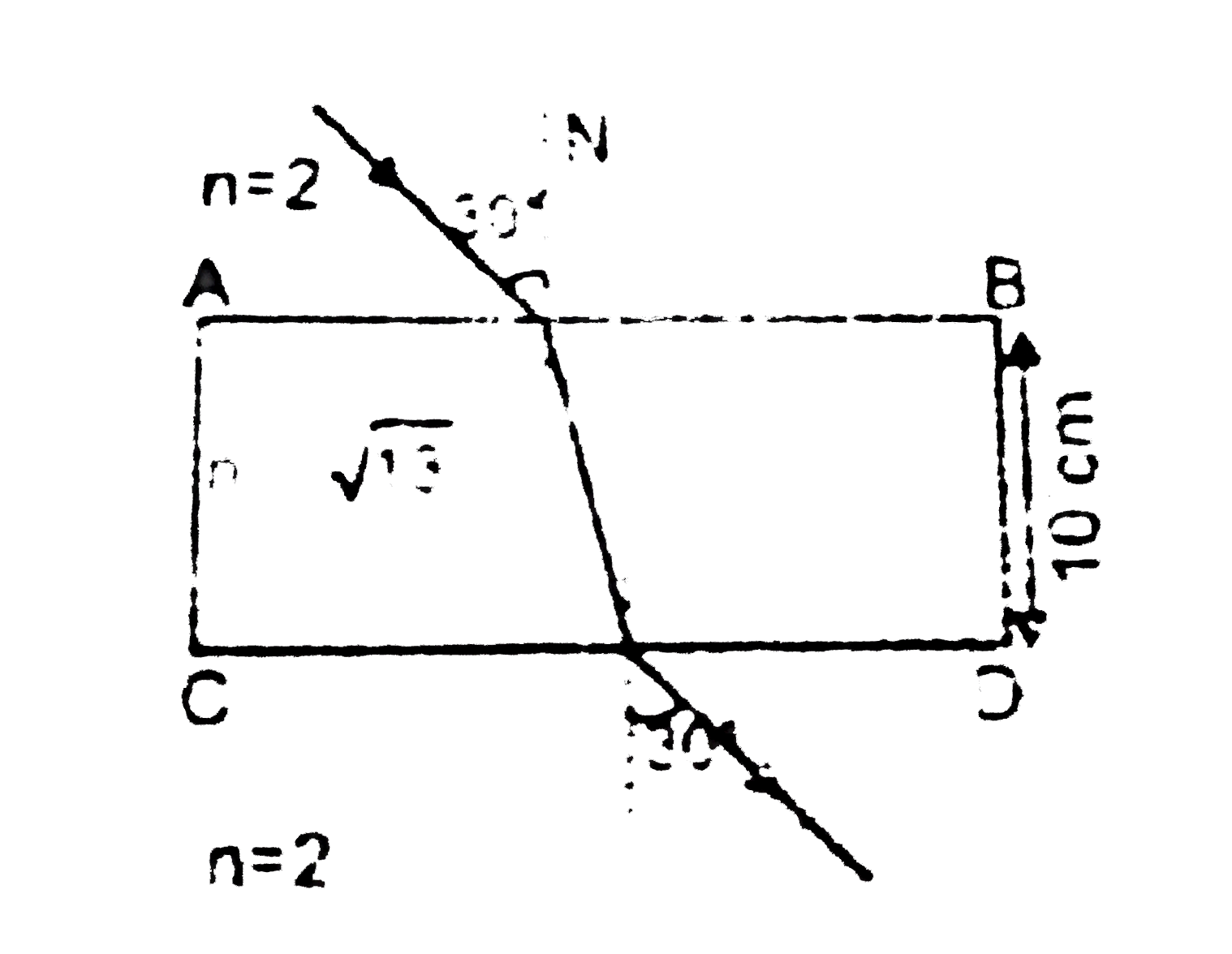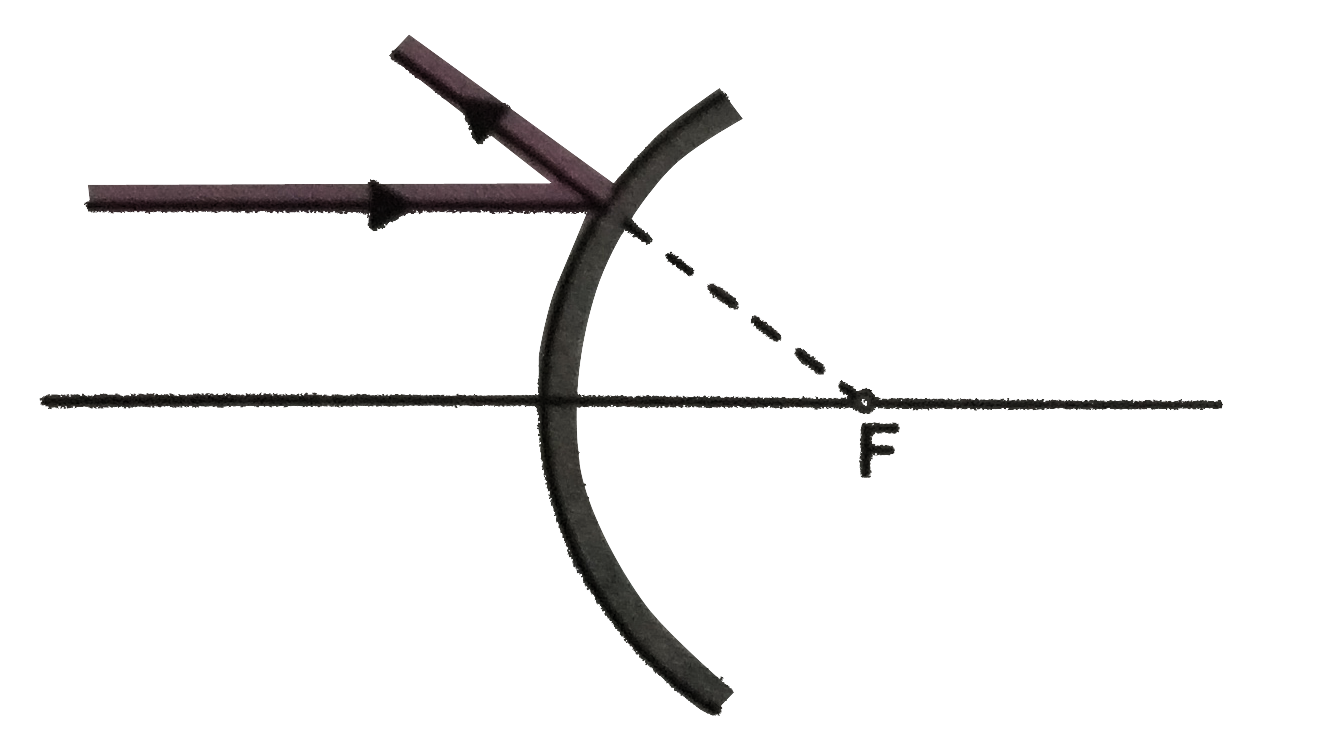Find the displacement of the ray after it imerges from
 .
.
5 cm
1 cm
The correct Answer is:A
by shell's law
So, lateral displacement
.
Topper's Solved these Questions
- DAILY PRACTICE PROBLEMBOOK - RESONANCECHAPTER - DAILY PRACTICE PROBLEMEXERCISE - DPP No.10
9 Videos
- DAILY PRACTICE PROBLEMBOOK - RESONANCECHAPTER - DAILY PRACTICE PROBLEMEXERCISE - DPP No.11
20 Videos
- DAILY PRACTICE PROBLEMBOOK - RESONANCECHAPTER - DAILY PRACTICE PROBLEMEXERCISE - DPP No.8
9 Videos
- CURRENT ELECTRICITYBOOK - RESONANCECHAPTER - CURRENT ELECTRICITYEXERCISE - High Level Problems (HIP)
21 Videos
- ELECTRO MAGNETIC WAVESBOOK - RESONANCECHAPTER - ELECTRO MAGNETIC WAVESEXERCISE - Exercise 3
27 Videos
Similar Questions
Lateral displacement of ray passing through a glass slab
A ray of light is incident on a parallel sided glass slab of refractive index n and thickness t as shown in Fig. 34-2. Find the lateral displacement of the ray as it passes through the slab.
View SolutionThe periodic time of a linear harmonic oscillator is 2π second, with maximum displacement of 1cm. If the particle starts from extreme position, find the displacement of the particle after π3 seconds.
View Solution
Knowledge Check
Refer Q.141 find the displacement of the particle after 3s.
A5 mB7 mC11 mD9 m
Find the distance and displacement if the body moves from A to B along the path APQRSTUB.

View SolutionFind the distance and displacement if the body moves from A to B along the path APQRB.

View SolutionA ray of light is incident on a convex mirror as shown in Fig.
Redraw the above diagram after completing the path of the light ray after reflection from the mirror.

View SolutionTo construct a ray diagram we use two rays of light which are so chosen that it is easy to determine their directions after reflection from the mirror. Choose these two rays and state the path of these rays after reflection from a concave mirror. Use these two rays to find the nature and position of the image of an object placed at a distance of 15 cm from a concave mirror of focal length 10 cm.
View SolutionTo construct a ray diagram we use two rays of light which are so chosen that it is easy to determine their directions after reflection from the mirror. Choose these two rays and state the path of these rays after reflection from a concave mirror. Use these two rays to find the nature and position of the image of an object placed at a distance of 15 cm from a concave mirror of focal length 10 cm.
View SolutionA ray emanating from the point (-3,0) is incindent on the ellipse 16x2+25y2=400 at the point p with ordinate 4. Find the equation of the reflected ray after first reflection.
View SolutionTo construct a ray diagram we use two rays of light which are so chosen that it is easy to determine their directions after reflection from the mirror. Choose these two ras and state the path of these rays after reflection from a concave mirror . Use these two rays to find the nature and position of the image of an object plced at a distance of 15 cm from a concave mirror of focal length 10 cm.
View Solution
